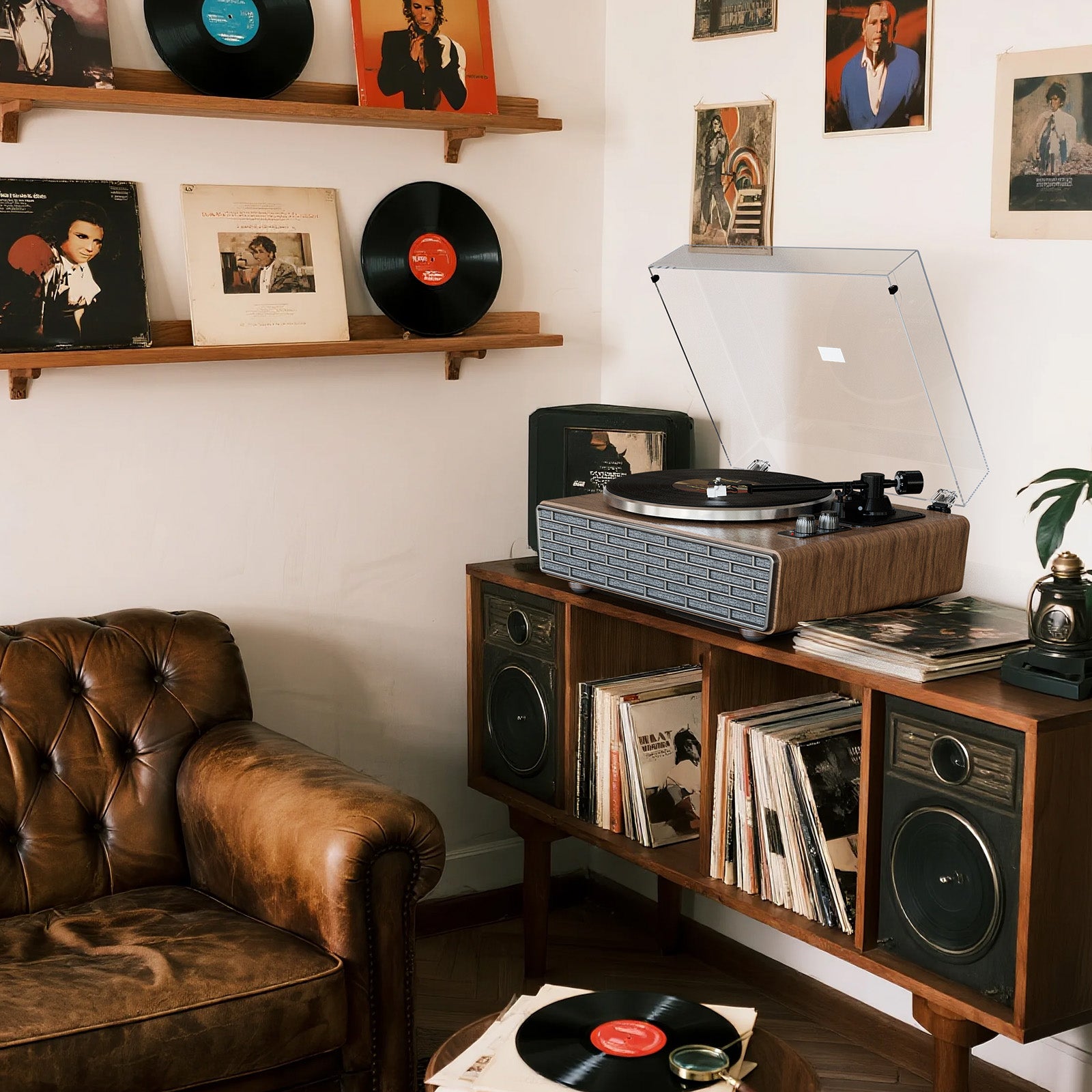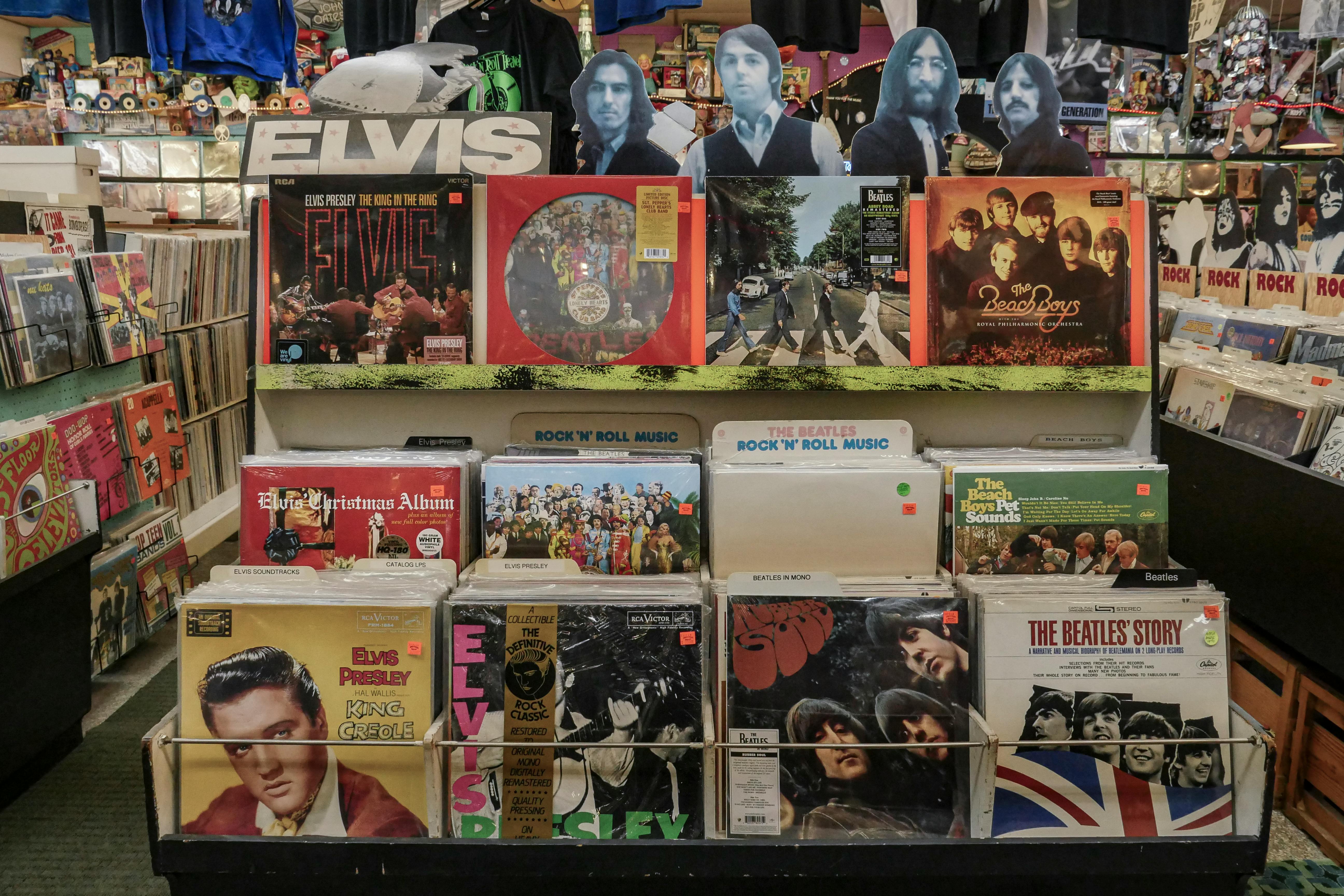Vinyl records are more than music—they’re investments and cultural treasures. A rare first pressing, like The Beatles’ White Album ($500-$5,000 in mint condition), can lose value or become unplayable if mishandled. Warping, scratches, or sleeve damage from poor storage can ruin even a standard LP, diminishing the warm, analog sound that makes vinyl special. Storing records correctly ensures they remain pristine, whether you’re spinning them on a turntable or saving them for future collectors.
The vertical versus horizontal storage debate hinges on physics, practicality, and preservation. Let’s dive in.
Vertical Storage: The Gold Standard
Vertical storage—keeping records upright like books on a shelf—is widely recommended by vinyl experts, collectors, and record stores. Here’s why it’s the preferred method:
1. Prevents Warping
- Vinyl is sensitive to pressure and weight. Storing records vertically distributes their weight evenly along the edge, minimizing stress on the grooves. Horizontal stacking, especially in piles, can cause warping over time as weight presses unevenly, particularly in warm environments. A warped Pink Floyd Wish You Were Here ($200 in Near Mint) might drop to $20 if unplayable.
- Tip: Keep records snug but not tightly packed—about as firm as a handshake—to avoid pressure on sleeves or vinyl.
2. Protects Grooves
- Vertical storage ensures grooves face sideways, reducing the risk of dust or debris settling into them. Horizontally stored records, especially without inner sleeves, can accumulate particles that cause pops or clicks during playback. Clean grooves are essential for a valuable jazz Blue Note LP ($1,000+).
3. Preserves Sleeves
- Album covers are part of a record’s value, often featuring artwork or inserts like posters. Vertical storage prevents sleeve corners from being crushed or seams from splitting under weight, a common issue with horizontal stacks. A pristine sleeve for Led Zeppelin’s Physical Graffiti can boost its value to $300.
4. Easy Access
- Vertical storage mimics record store bins, making browsing, organizing, and pulling records simple without disturbing others. Horizontal stacks require lifting or shuffling, risking scratches or dropped LPs. For collectors with hundreds of records, vertical setups save time and effort.
Best Practices for Vertical Storage
- Use sturdy shelves or crates designed for vinyl, like IKEA Kallax units, to support weight (a 12” LP averages 120-200 grams).
- To prevent warping, store in a cool (60-70°F), dry environment away from sunlight or heat sources (e.g., radiators).
- Use dividers every 6-12 inches to keep records upright, avoiding leaning that can bend covers.
- Invest in poly-lined inner sleeves to protect vinyl from paper dust and outer plastic sleeves for covers.

Horizontal Storage: When It Works (and When It Doesn’t)
Horizontal storage—stacking records flat like pancakes—is less ideal but can work in specific cases. Here’s the breakdown:
When It’s Okay
- Short-Term or Small Collections: If you have fewer than 10-20 records and plan to move or store them briefly (e.g., a week), horizontal storage is low-risk, provided stacks are small and evenly weighted. A new collector with a handful of LPs might stack them temporarily on a desk.
- Transporting Records: During moves, records are often packed horizontally in boxes with padding to prevent sliding. Keep stacks under 10 records to avoid pressure.
- Display Purposes: Some collectors stack a few records horizontally for aesthetic reasons, like showcasing cover art on a table. This works if rotated often and not left for months.
Why It’s Risky
- Warping Risk: Horizontal stacks place weight on the bottom records, especially in tall piles (20+ LPs). Over time, heat or humidity exacerbates warping. A warped rare punk 7” single ($500 value) could become worthless.
- Groove Damage: Pressure from stacking can flatten grooves, reducing sound quality. This is disastrous for audiophile pressings like a 180-gram Radiohead OK Computer ($150).
- Sleeve Wear: Horizontal storage often leads to ring wear (circular marks from vinyl pressing against the cover) or crushed edges, lowering value. A damaged sleeve on a first pressing of David Bowie's Ziggy Stardust might cut its $400 value in half.
- Dust Accumulation: Flat records collect dust in grooves, especially if stacked without protective sleeves, leading to noise during playback.
Guidelines for Horizontal Storage (If You Must)
- Limit stacks to 5-10 records to reduce weight.
- Place cardboard or foam between records to distribute pressure.
- Use archival-quality inner sleeves to shield vinyl.
- Store in a climate-controlled space and check regularly for warping.
- Avoid stacking valuable or irreplaceable LPs, like a mint jazz mono pressing ($2,000+).
Vertical Wins, But Context Matters
Vertical storage is the safest and most practical choice for long-term vinyl care, protecting sound quality, sleeve condition, and market value. Horizontal storage can temporarily solve small collections or transport, but it’s risky for large stacks or valuable records. If you’re unsure, think like a record store—bins are vertical for a reason.
For collectors with mixed needs (e.g., display and storage), a hybrid approach works: Keep active records vertically on shelves for easy access, and use horizontal stacks sparingly for decorative or short-term purposes. Always prioritize climate control and protective sleeves.
Vinyl Storage Tips Beyond Orientation
To maximize record longevity, pair vertical storage with these habits:
- Clean Before Playing: Use a carbon fiber brush or record cleaning solution to remove dust. A clean Nirvana Nevermind ($200) stays pristine.
- Use Quality Sleeves: Poly-lined inner sleeves prevent scratches; outer plastic sleeves shield covers.
- Avoid Overcrowding: Vertical shelves should allow records to slide out easily, reducing edge wear.
- Monitor Environment: Keep humidity at 40-50% and temperature stable to avoid mold or warping.
Keep Your Vinyl Safe and Sound
Storing records vertically is the best way to protect your collection, ensuring warping, groove damage, and sleeve wear don’t diminish your LPs’ value or sound. Horizontal storage has its place for short-term or small stacks, but it’s no match for the long-term benefits of upright care. By organizing your records carefully, you’ll enjoy analog warmth and preserve treasures for years.
So, organize those shelves, check your storage setup, and play your vinyl with pride. Your collection deserves the best.





Leave a comment
All comments are moderated before being published.
This site is protected by hCaptcha and the hCaptcha Privacy Policy and Terms of Service apply.